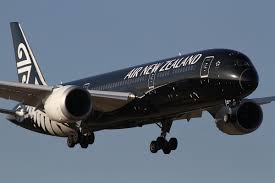Due to “challenging” regulatory and legislative circumstances, a lack of alternative fuel, and delays in the production of new aircraft, Air New Zealand decided to abandon its 2030 carbon emissions reduction targets on Tuesday.
The national carrier, which is among the largest companies in New Zealand in terms of revenue, made the most high-profile reversal of an airline’s pledge to adhere to a U.N. framework that helps businesses stay on track to meet the Paris Agreement on emissions reductions.
This move brought attention to the challenges that airlines and policymakers face in reducing aviation emissions.
According to James Higham, a sustainable tourism specialist at Griffith University in Australia,
“if even Air New Zealand can’t do it, it kind of cements the reality that reducing emissions from aviation is an impossible task under the current technical regime.”
Laptops 1000The information released on Tuesday represented a significant shift from Air New Zealand’s declaration in 2022 that it was the second airline globally to have its plans approved by the Science Based Targets Initiative aviation framework.
It promised a 16.3% decrease in absolute emissions and a 28.9% reduction in carbon emissions by 2030 as compared to a baseline of 2019.
The airline, which was headed by New Zealand’s current prime minister, Christopher Luxon, was supposed to start releasing progress reports on its 2030 emissions objectives this fiscal year.
In keeping with the Paris Agreement, Air New Zealand stated that it remains dedicated to achieving net zero carbon emissions by 2050.
According to a written statement from CEO Greg Foran, the airline would set new “near-term” emissions reduction goals that “better reflect the challenges relating to aircraft and alternative jet fuel availability.”
More fuel-efficient aircraft could take longer to be added to Air New Zealand’s fleet due to problems with global manufacturing and supply chains, according to Foran.
The “affordability and availability of alternative jet fuels” as well as national and international policy frameworks are “beyond the airline’s direct control,” he continued.
His comments reflected issues that the aviation industry faces globally. Air travel is one of the most carbon-intensive activities per passenger, yet it accounts for only 2.5% of global carbon emissions.
The production of more fuel-efficient aircraft is running behind schedule, and progress in lowering fuel use is painfully sluggish.
“It’s intended to be an extremely challenging goal to achieve, but I believe one that must exist to demonstrate to everyone what must be done,” stated Sola Zheng, a senior researcher with the International Council on Clean Transportation who contributed to the setting up of the SBTi.
Zheng stated that the objective was strict: “Unless airlines are willing to slow down their growth.”
The German airline Lufthansa, the British airline easyJet, the Chilean airline LATAM Airlines, United Airlines, and Japan Airlines were among the other airlines identified on the SBTi database as having “removed” their commitment to near-term emissions goals.
For a considerable amount of time, analysts have cautioned that the amount of sustainable fuel generated does not match the demand.
According to Zheng, rather than using alternative fuels, “there aren’t many incentives for more efficient flights and increased efficiency is usually coming from more efficient aircraft models.”
The airline will resume its “advocacy for the global and domestic regulatory and policy settings” that would assist the aviation industry “doing its part to mitigate climate change risks,” according to a statement released by the airline’s chair, Dame Therese Walsh, on Tuesday.
In an unrelated meeting with his counterpart from New Zealand on Tuesday, Australia’s Minister for Climate Change and Energy Chris Bowen told reporters that Air New Zealand’s announcement served as a reminder of the difficulties and the necessity of stepping in and helping businesses “do it.”
Bowen stated, “Nobody ever suggested it was easy.” “What it does do is emphasize how important government involvement is.”
Driven by pictures of the clean and picturesque landscapes of the nation, tourism is New Zealand’s second-biggest export industry.
In-flight safety videos including environmental stewardship themes are just one example of how Air New Zealand’s marketing campaigns have frequently been in line with plans to promote the nation’s “clean and green” image overseas.
The professor of tourism, Higham, stated that cutting back on flights is the only way airlines can significantly lower their emissions.
He claimed that despite “doing everything really—including carbon offsetting programs and sustainable aviation fuels—Air New Zealand hasn’t seen any progress.

















